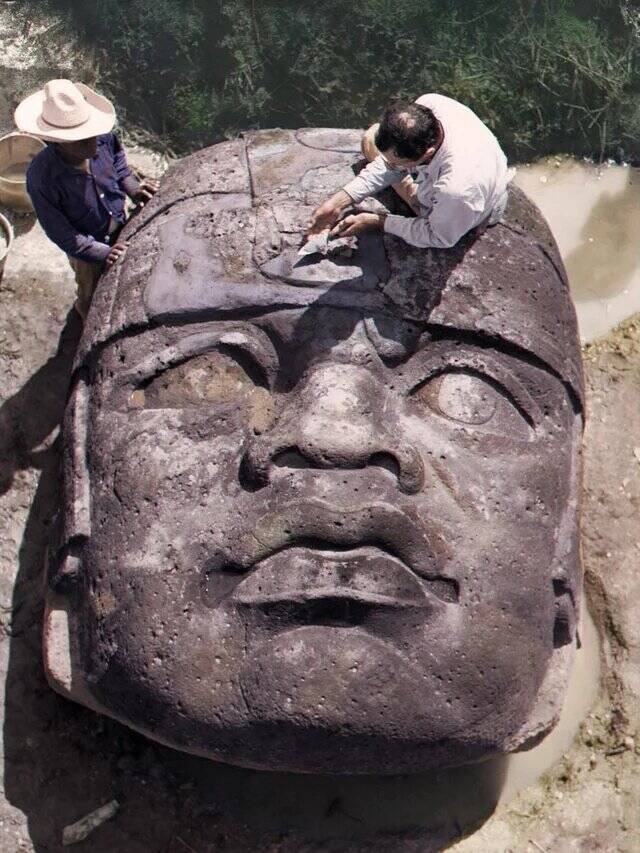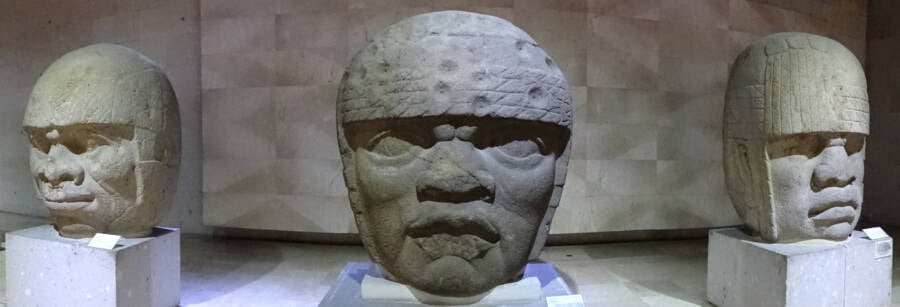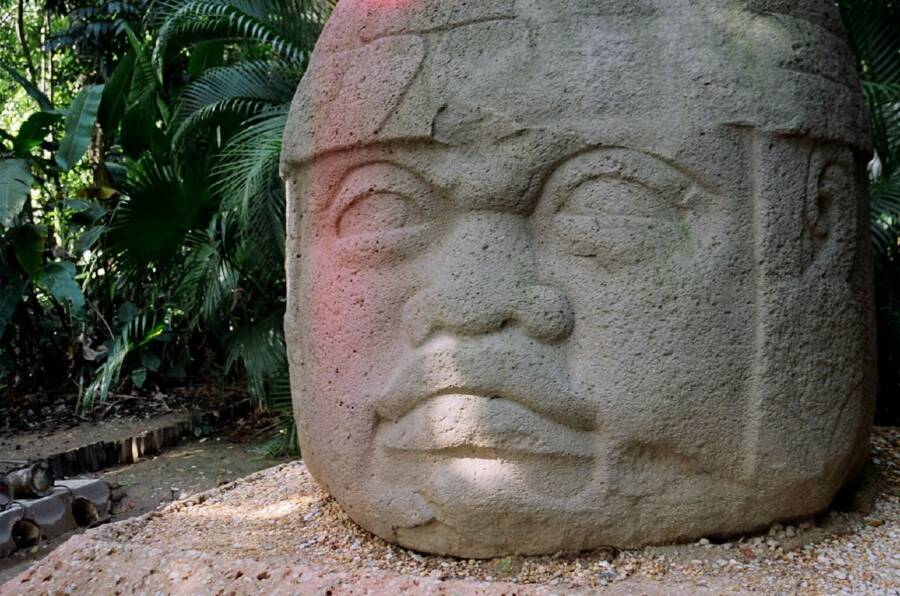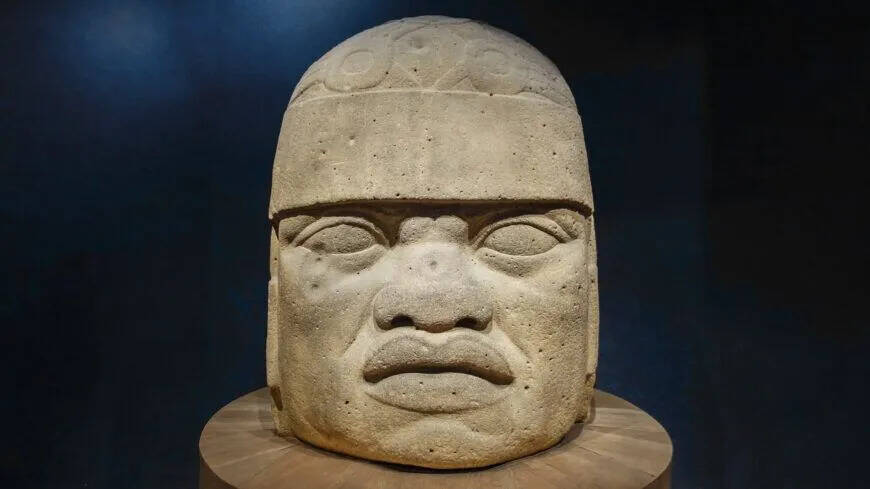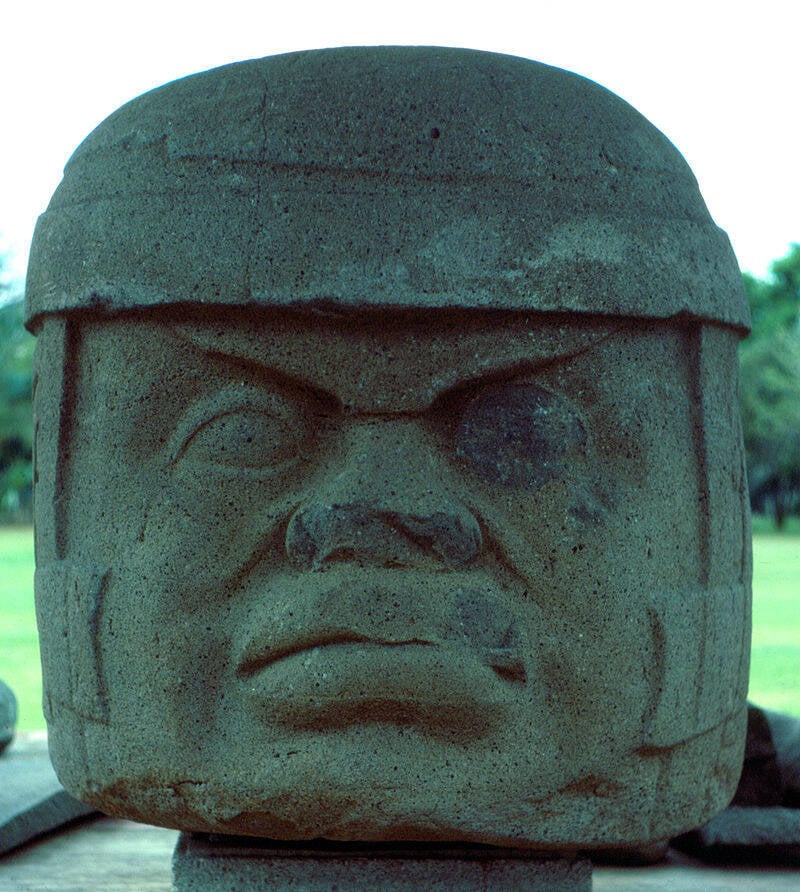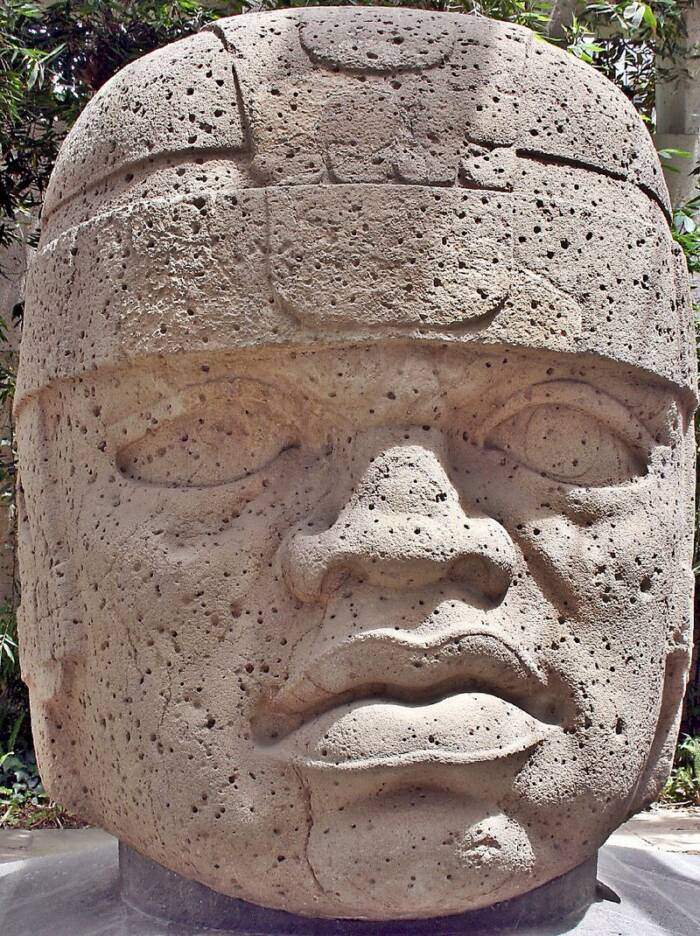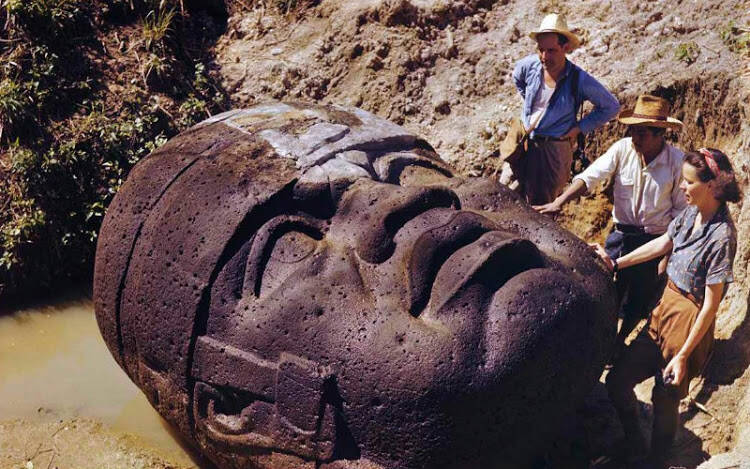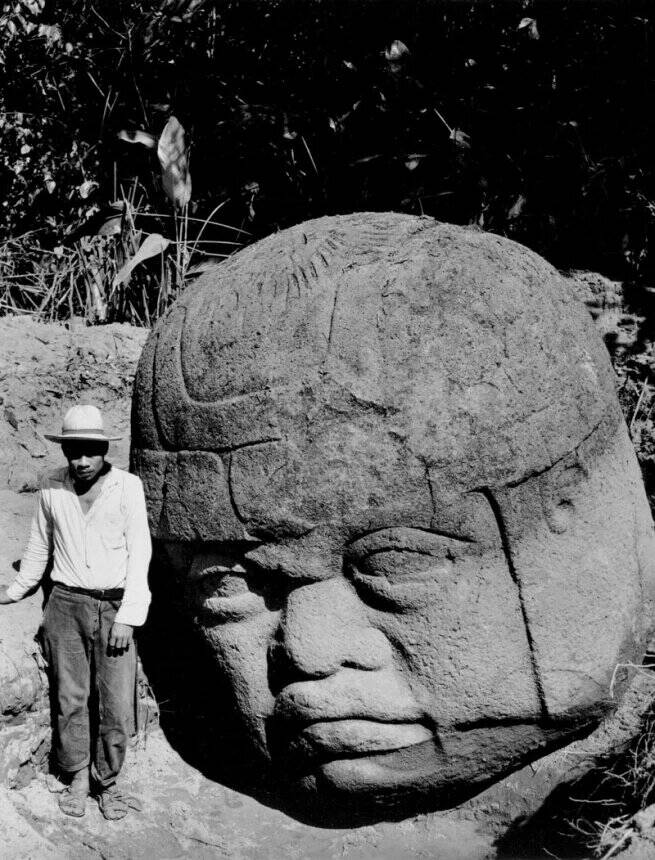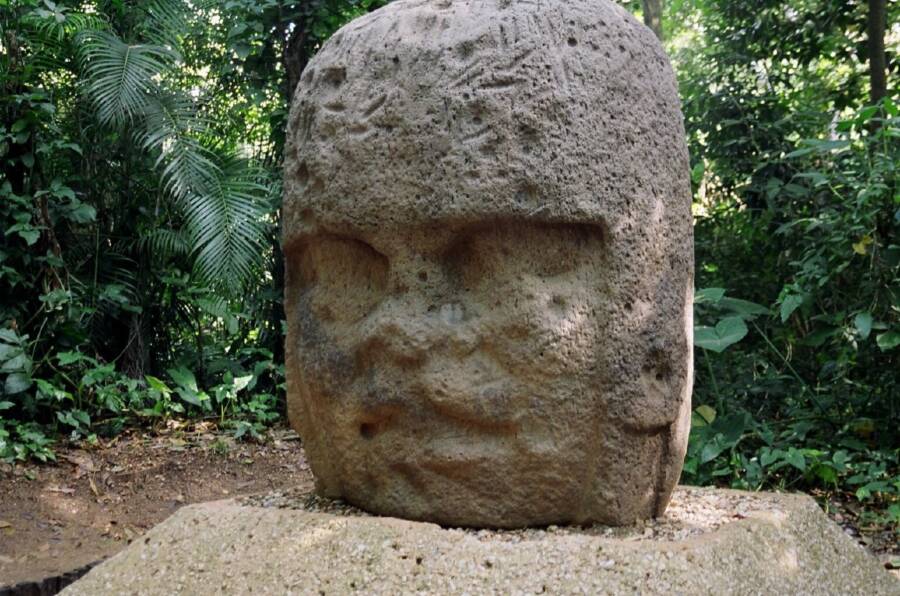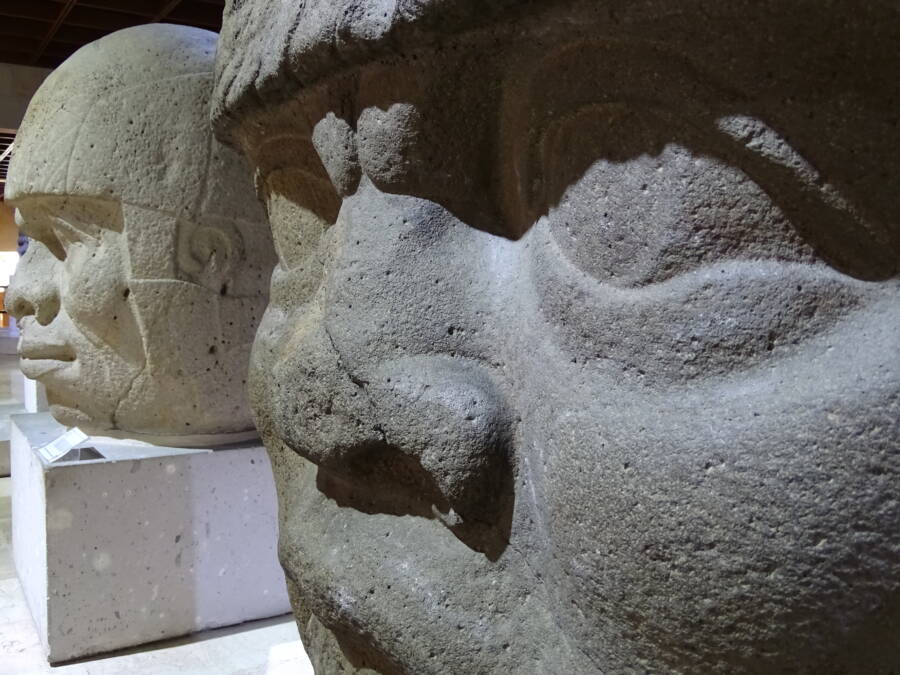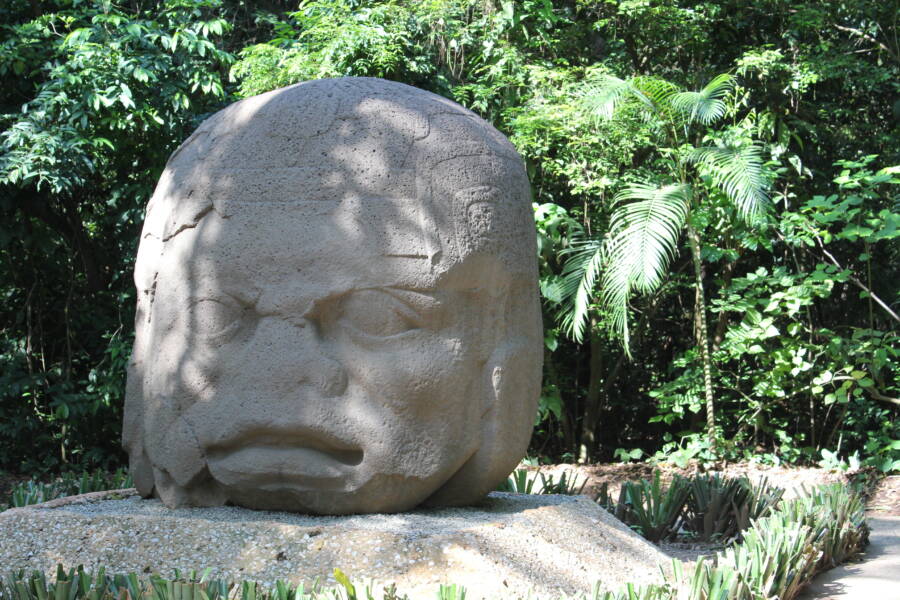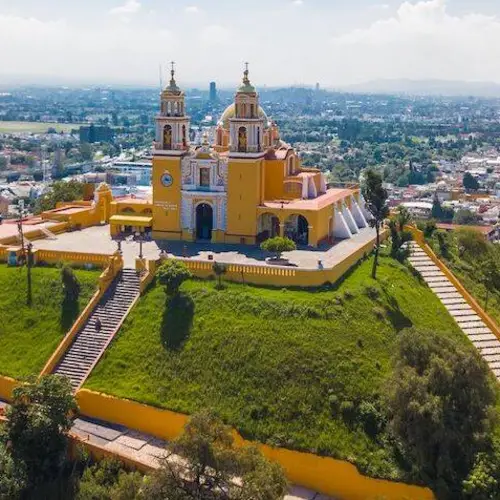While researchers believe the Olmec civilization created the Olmec heads some 3,400 years ago to depict Mesoamerican rulers, their exact meaning remains a mystery.

James Gaither/FlickrIt’s believed that the Olmec heads depict real Mesoamerican rulers, but no one knows for sure.
In 1862, explorer José María Melgar y Serrano discovered a colossal stone sculpture at Tres Zapotes, Mexico — and the mystery of the Olmec heads was born. In the years since, other ancient stone heads have been uncovered across Mexico, each measuring about eight tons and bearing distinct facial features.
Archaeologists have hypothesized that these sculptures were created by an ancient Mesoamerican culture called the Olmecs. Often referred to as the “mother” culture of later Mesoamerican civilizations like the Aztecs and the Maya, the Olmecs were a group of people who inhabited the modern-day Mexican states of Tabasco and Veracruz from roughly 1200 B.C.E. to 400 B.C.E. They were known for their astronomical knowledge, elaborate writing system, and artwork.
In total, archaeologists have discovered 17 confirmed Olmec heads. Today, these astonishing relics reveal the cultural richness of one of Mesoamerica’s most enigmatic civilizations.
The Intriguing History Of The Olmec People Of Ancient Mesoamerica
The Olmecs are the oldest known Mesoamerican civilization. They first appeared in what is now Veracruz and Tabasco over 3,000 years ago, and their influence in the area persisted until about 400 B.C.E.
Beginning around the 12th century B.C.E., the Olmecs established San Lorenzo in southeast Veracruz. This city would flourish as a cultural hub for centuries, thanks in part to a nearby river basin and the region's fertile soil.
The Olmecs had their own complex writing system that would go on to inspire the Mayan civilization. They were also known for crafting impressive works of art — including the 17 surviving Olmec heads recognized today.

Wikimedia CommonsOlmec terracotta figurines at the Metropolitan Museum of Art in New York.
The Olmecs crafted their artworks out of a wide variety of media, including stone, terracotta, jade, and wood. While their art sometimes featured Olmec deities, the Olmecs also took inspiration from those around them, representing figures such as rulers, warriors, athletes, and even children.
Around 900 B.C.E., the Olmecs left San Lorenzo en mass, leading researchers to believe the city may have suffered some ecological disaster or foreign invasion. They eventually settled in the city of La Venta in the modern-day state of Tabasco and began a new era of Olmec culture.
In La Venta, the Olmecs built a massive pyramid and continued to craft their impressive artworks. Over the years, researchers have unearthed jade tools, pottery, and figurines from the site.
However, La Venta eventually suffered the same fate as San Lorenzo. By 400 B.C.E., the Olmecs had abandoned the city, likely because of warfare or environmental changes.
Regardless of how they met their end, the Olmecs served as the blueprint for future Mesoamerican cultures, including the Maya and the Aztecs — and left lasting impacts that continue to astonish historians and archaeologists today.
Archaeologists Discover The Colossal Olmec Heads

Public DomainExcavating a giant Olmec head.
In 1862, an explorer named José María Melgar y Serrano discovered the first Olmec colossal head at Tres Zapotes. This news was not widely reported outside of Mexico at the time. But in 1938, archaeologist Matthew Stirling excavated the same head and helped to bring Olmec culture to the forefront.
From then until as recently as 1994, researchers uncovered several more Olmec heads across Mexico. In total, archaeologists found 10 heads at San Lorenzo, the first great Olmec city; four at La Venta; two at Tres Zapotes; and one at La Cobata.
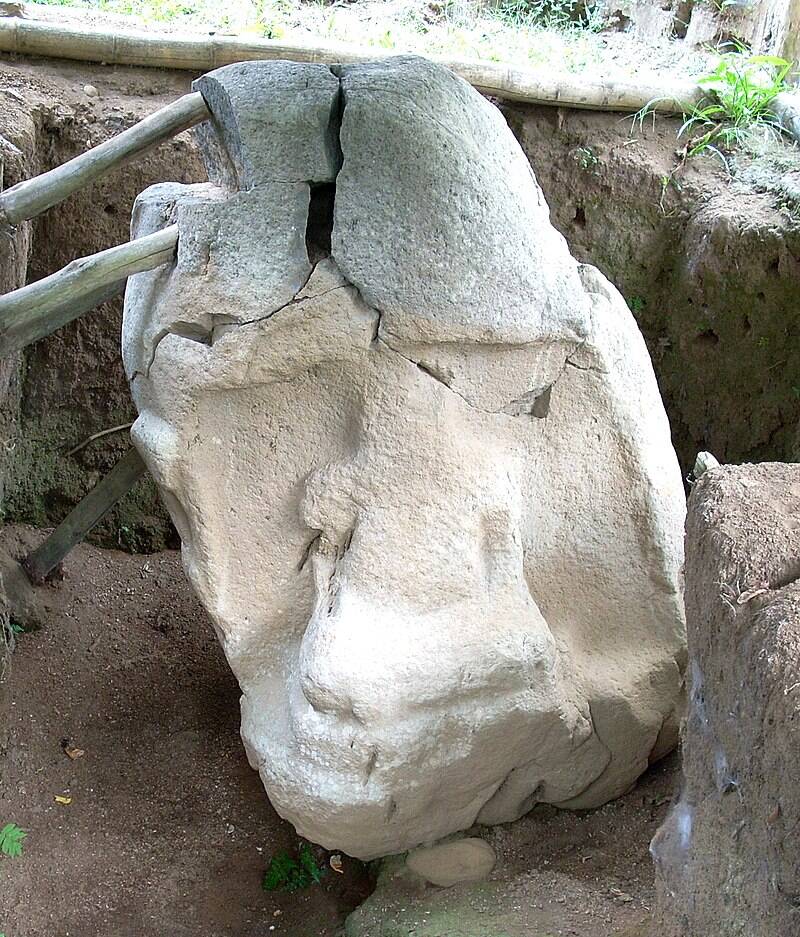
Wikimedia CommonsMonument 23 at Takalik Abaj, Guatemala. It is rumored to be an Olmec head recycled into a throne.
Each head has distinct facial features and was likely originally painted in vibrant color. Many of the Olmec heads are adorned with a type of helmet worn both in battle and during the Mesoamerican ballgame, leading some scholars to speculate that the heads depicted warriors or athletes.
However, most historians believe the Olmec heads were meant to depict different Mesoamerican rulers. Curiously, many of them appear to have been intentionally buried, perhaps to symbolize shifts in power or as a form of ancestor worship.
While they average about eight tons in weight, the largest Olmec head measures about 10 feet tall and weighs about 50 tons — the equivalent of more than seven elephants.
Most of the Olmec heads were carved from a single basalt boulder using hand-held stones. Despite their immense size, they were sometimes transported over 60 miles to their final destination. This process was so laborious that two of the heads were reportedly recarved from stone thrones rather than basalt.
In the 1970s, researchers at Takalik Abaj in Guatemala uncovered a stone throne they suspect may have been repurposed from a possible 18th head. The presence of Olmec sculptures this far from the Olmec heartland may attest to their sophisticated transportation system — yet another feat that can be added to the Olmecs' impressive list of achievements.
Where Are The Olmec Heads Now?

Wikimedia CommonsThe entrance to the National Anthropology Museum in Mexico City, where two of the Olmec heads are located.
Today, the Olmec heads are dispersed across museums in Mexico. San Lorenzo Heads 2 and 6 are currently on display at the National Anthropology Museum in Mexico City. San Lorenzo Head 10 is on display at San Lorenzo Tenochtitlán Community Museum, and the rest of the San Lorenzo collection is housed at Xalapa's Anthropology Museum.
The La Venta heads are all on display in the city of Villahermosa. One of the Tres Zapotes heads is at Tres Zapotes Community Museum, while the other is on display with the La Cobata head at Tuxtla's Central Plaza in Tuxtla Gutierrez.
The Takalik Abaj monument, meanwhile, sits at the Takalik Abaj archaeological site in the Municipality of El Asintal.
Thousands of visitors flock to these sites each year to catch a glimpse of these relics from one of Mesoamerica's most mysterious cultures. The heads have even toured the world, featuring in temporary exhibitions in cities like New York, Washington D.C., and San Francisco.
To this day, scholars are still puzzling over just why the Olmecs created these sculptures, why they buried them, and what symbolic purpose they might have served. Thousands of years after their creation, the Olmec heads are still revealing their secrets.
After reading about the Olmec heads, dive into the story of Templo Mayor, the massive Aztec pyramid in the heart of the empire's capital. Then, read about 30 famous sculptures and statues from around the world.


